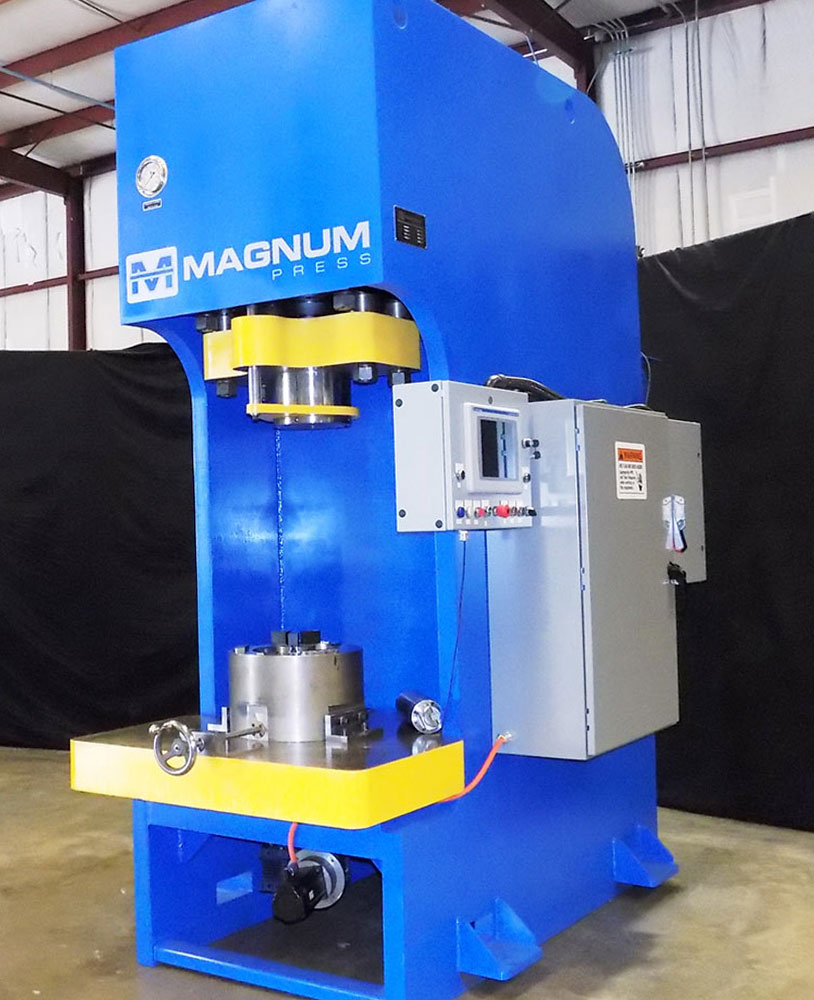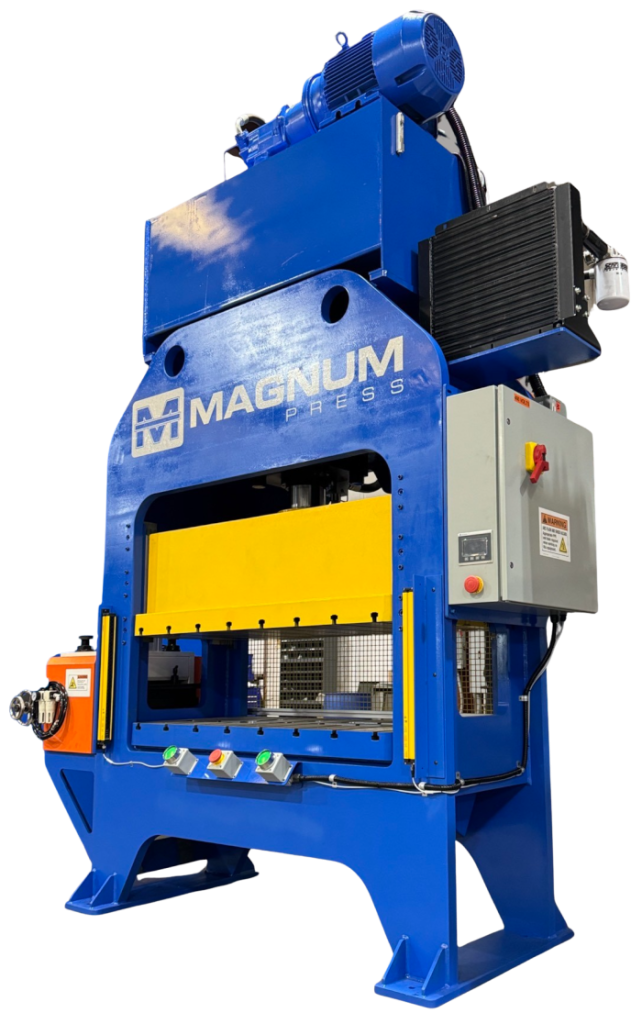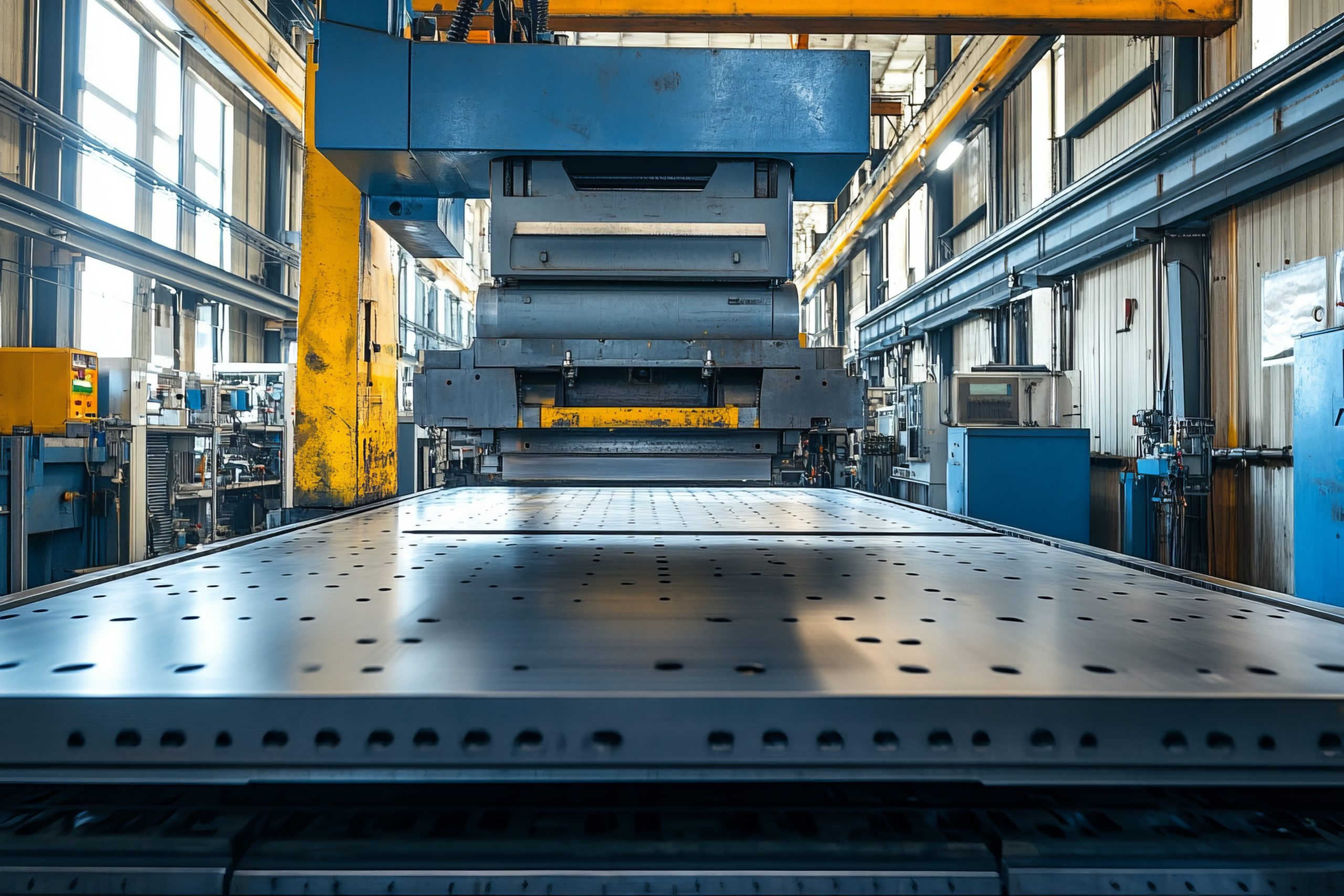How Hydraulic Presses are Used to Make Ceramics
Ceramics often evoke images of pottery, bricks, ceramic tiles, or dinnerware, but their applications are more extensive and technologically advanced. They are used as components in various industries, including aerospace, automotive, and medical fields, for their versatility, durability, heat resistance, radiation tolerance, porosity, or electrical properties.
At the heart of producing these ceramic products are hydraulic presses. These powerful machines offer unmatched precision and efficiency, enabling the compaction and shaping of ceramic powders into high-quality components or products.
This article explores the vital role hydraulic presses play in ceramic production and showcases the specific ways they are being used. Explore with Magnum Press how the hydraulic press revolutionized ceramic production, making it easier to shape and compact materials for various industries.
Uses of Hydraulic Presses in Ceramic Production
Hydraulic presses are integral to various stages of ceramic production, providing the controlled pressure necessary for shaping, compacting, and finishing ceramic materials.
Ceramic Powder Compaction
Hydraulic presses are essential for compacting ceramic powders into solid forms known as "green compacts." This involves filling a mold with powder and applying high pressure to achieve the right density and shape, ensuring uniformity and minimizing defects. The process is used across various industries to create durable ceramic products like electronic components, automotive parts, dental implants, and cutting tools.
Metal Mold Production and Repair
Hydraulic presses shape metal molds, crucial for mass-producing ceramic components with complex forms. They also play a role in maintaining these molds by straightening bent parts or creating replacement inserts, ensuring longevity and precise fits for continued use.
Forming Large and Heavy Ceramic Parts
For large or heavy ceramic parts, hydraulic presses apply the necessary force to shape and compact substantial amounts of ceramic powder without causing defects. This flexibility allows for a wide range of ceramic shapes and sizes, from industrial machinery parts to architectural elements, while increasing efficiency and reducing labor costs.
Manufacturing Ceramic Matrix Composites (CMCs)
Hydraulic presses are key in making CMCs, which combine ceramic with reinforcing fibers for added strength.
They assist in:

Powder compaction
Compacting ceramic powder and fibers into a dense, uniform matrix.
Fiber preforming
Shaping and aligning fibers for optimal strength.
Composite consolidation
Applying pressure and heat to bond the ceramic and fibers.
Cost-Effective Solution
Hydraulic presses help minimize waste during processing by ensuring raw materials are used properly and efficiently. For example, using molds and dies to make cutting, shaping, forming, or compacting of food products can reduce scraps and increase the yield of your operation. This can decrease any loss incurred from food waste and increase your revenue from improved production yields.

Manufacturing Specialized Ceramics
Piezoelectric ceramics
Bio-ceramics
Optical ceramics
Why Hydraulic Presses are Important in Ceramics Production
Hydraulic presses are vital in ceramics production for their unmatched ability to apply precise, powerful, and uniform pressure, which are essential for creating high-quality ceramic components.
High force capability
A hydraulic press can generate the immense force necessary for compacting ceramic powders into dense, solid forms. Together with heat, the high pressure they provide ensures that the ceramic products not only achieve the desired shape and density, but also the strength and durability required.
Precise control
Their precise control over pressure and compaction time delivered is essential in minimizing defects and ensuring consistent and high-quality results in ceramic production.
Uniform pressure distribution
The uniform distribution of pressure that hydraulic presses provide is critical for achieving consistent density through the ceramic part. This reduces the risk of defects and ensures superior performance in the final product.
Versatile
Hydraulic presses can be configured with various dies and molds, making them highly versatile in producing different shapes and sizes of ceramic components and products. This versatility is what makes them valuable in a variety of applications, from simple ceramic tiles to complex ceramic components used in aerospace, automotive, and medical industries.
Efficient
Manufacturers can enhance their production efficiency through the automation features offered by some hydraulic presses. This efficiency is particularly beneficial in large-scale operations where high-volume production is required.
Consistent
Hydraulic presses can maintain a consistent level of performance over long production runs. This ensures each ceramic product meets stringent quality standards and reduces the need for stopping an operation to recalibrate the machine.
Hydraulic Presses: An Important Equipment in Ceramic Production
Hydraulic presses play an important role in the production of ceramics. They compact ceramic powders form large and heavy ceramic parts, and produce ceramic matrix composites and specialized ceramics.
With their ability to generate immense pressures evenly and precisely, they are indispensable in their role in the ceramic manufacturing industry and in the advancement, product development, and reliability of ceramic products and components.

Explore Magnum Press’ Advanced Hydraulic Press Solutions
Discover how our wide range of hydraulic press models can optimize your ceramic manufacturing process. Contact us today to learn more about our customizable solutions and enhance your production efficiency and quality. Request a quote today for the hydraulic press you need!


